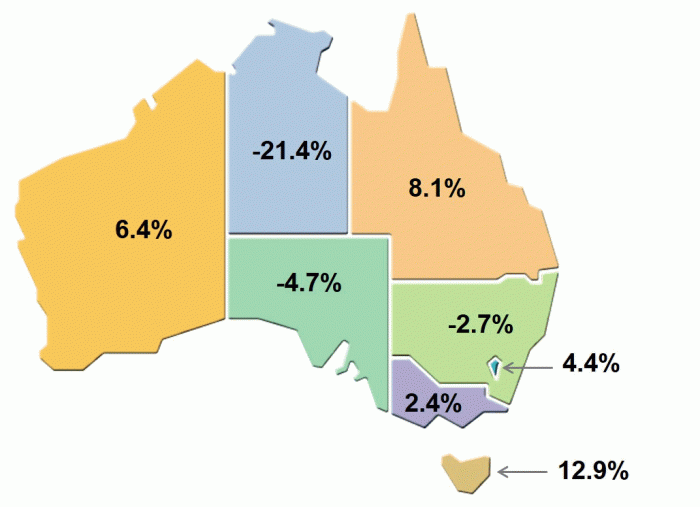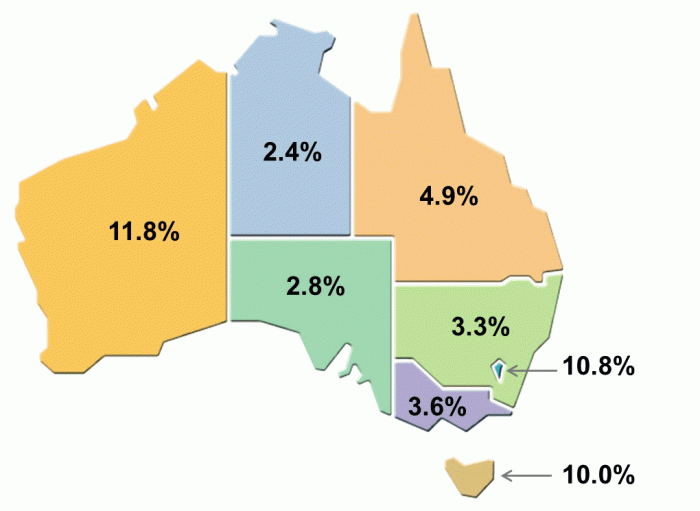3.1 Resident returns - original, seasonally adjusted and trend estimates(a)
[["Nov-09","Dec-09","Jan-10","Feb-10","Mar-10","Apr-10","May-10","Jun-10","Jul-10","Aug-10","Sep-10","Oct-10","Nov-10","Dec-10","Jan-11","Feb-11","Mar-11","Apr-11","May-11","Jun-11","Jul-11","Aug-11","Sep-11","Oct-11","Nov-11","Dec-11","Jan-12","Feb-12","Mar-12","Apr-12","May-12","Jun-12","Jul-12","Aug-12","Sep-12","Oct-12","Nov-12","Dec-12","Jan-13","Feb-13","Mar-13","Apr-13","May-13","Jun-13","Jul-13","Aug-13","Sep-13","Oct-13","Nov-13","Dec-13","Jan-14","Feb-14","Mar-14","Apr-14","May-14","Jun-14","Jul-14","Aug-14","Sep-14","Oct-14","Nov-14","Dec-14","Jan-15","Feb-15","Mar-15","Apr-15","May-15","Jun-15","Jul-15","Aug-15","Sep-15","Oct-15","Nov-15","Dec-15","Jan-16","Feb-16","Mar-16","Apr-16","May-16","Jun-16","Jul-16","Aug-16","Sep-16","Oct-16","Nov-16","Dec-16","Jan-17","Feb-17","Mar-17","Apr-17","May-17","Jun-17","Jul-17","Aug-17","Sep-17","Oct-17","Nov-17","Dec-17","Jan-18","Feb-18","Mar-18","Apr-18","May-18","Jun-18","Jul-18","Aug-18","Sep-18","Oct-18","Nov-18","Dec-18","Jan-19","Feb-19","Mar-19","Apr-19","May-19","Jun-19","Jul-19","Aug-19","Sep-19","Oct-19","Nov-19"],[[503.80200000000002],[438.15899999999999],[824.85799999999995],[455.82400000000001],[482.78199999999998],[561.678],[492.96499999999997],[517.45000000000005],[730.90599999999995],[591.21799999999996],[629.83500000000004],[766.09699999999998],[537.15300000000002],[464.47399999999999],[909.40999999999997],[516.91700000000003],[514.41999999999996],[595.19100000000003],[605.64200000000005],[563.202],[805.85699999999997],[636.88900000000001],[696.04700000000003],[835.65099999999995],[584.32500000000005],[502.37799999999999],[951.78700000000003],[577.26800000000003],[553.07500000000005],[674.39800000000002],[575.63199999999995],[622.27200000000005],[853.35199999999998],[647.88400000000001],[720.10599999999999],[877.75599999999997],[610.43200000000002],[542.00900000000001],[999.41999999999996],[558.77800000000002],[585.69799999999998],[709.33000000000004],[637.279],[659.14200000000005],[902.24400000000003],[716.05999999999995],[775.67700000000002],[933.68499999999995],[655.29100000000005],[576.99800000000005],[1098.0070000000001],[612.76700000000005],[622.41200000000003],[751.654],[669.19799999999998],[672.75300000000004],[930.60199999999998],[765.06500000000005],[808.46400000000006],[934.745],[684.50999999999999],[588.94399999999996],[1150.2449999999999],[607.28800000000001],[646.255],[763.57799999999997],[684.92399999999998],[697.88900000000001],[940.48699999999997],[790.40300000000002],[834.87400000000002],[971.25199999999995],[705.37199999999996],[627.76999999999998],[1209.174],[668.14599999999996],[664.19399999999996],[812.52499999999998],[719.279],[721.85299999999995],[1024.5940000000001],[822.31700000000001],[883.75999999999999],[1024.635],[738.73299999999995],[680.56299999999999],[1260.364],[738.70500000000004],[690.42700000000002],[893.91800000000001],[775.95600000000002],[763.18100000000004],[1070.74],[863.22799999999995],[946.16800000000001],[1078.681],[773.11199999999997],[680.76800000000003],[1336.9559999999999],[709.01999999999998],[740.72799999999995],[929.04200000000003],[822.23800000000006],[808.71400000000006],[1133.597],[916.197],[973.96699999999998],[1147.817],[810.32299999999998],[732.80799999999999],[1392.847],[746.08199999999999],[753.50999999999999],[916.43499999999995],[866.27700000000004],[841.95000000000005],[1122.5940000000001],[930.971],[992.82000000000005],[1145.9739999999999],[849.78599999999994]],[[555.78700000000003],[574.89999999999998],[562.81399999999996],[564.971],[582.63800000000003],[577.22199999999998],[560.53200000000004],[584.26499999999999],[610.07100000000003],[592.28499999999997],[604.64599999999996],[600.98199999999997],[601.56299999999999],[606.04600000000005],[622.79100000000005],[630.12199999999996],[631.17700000000002],[616.53599999999994],[684.38199999999995],[629.25199999999995],[649.24400000000003],[649.34199999999998],[659.50900000000001],[660.01300000000003],[661.81500000000005],[656.69500000000005],[655.66300000000001],[682.08699999999999],[676.15700000000004],[689.40800000000002],[660.80999999999995],[693.94600000000003],[692.85199999999998],[664.11099999999999],[682.65599999999995],[702.81500000000005],[691.69000000000005],[699.70600000000002],[685.83699999999999],[691.61500000000001],[708.86000000000001],[720.39200000000005],[731.27800000000002],[730.37900000000002],[739.08299999999997],[731.50099999999998],[731.44799999999998],[756.46799999999996],[743.57299999999998],[741.83399999999995],[761.09699999999998],[745.08799999999997],[755.73400000000004],[763.74000000000001],[762.61000000000001],[751.08699999999999],[762.06600000000003],[764.52099999999996],[766.94299999999998],[761.13499999999999],[771.84799999999996],[759.23800000000006],[778.76700000000005],[752.78300000000002],[783.90300000000002],[774.26900000000001],[773.04399999999998],[787.49400000000003],[768.33100000000002],[798.00199999999995],[794.43200000000002],[789.92700000000002],[803.62900000000002],[810.66700000000003],[809.37099999999998],[798.55600000000004],[810.48699999999997],[814.55700000000002],[809.25900000000001],[820.83699999999999],[836.33799999999997],[837.73099999999999],[845.11500000000001],[839.12],[841.73599999999999],[871.46500000000003],[855.24800000000005],[897.22900000000004],[853.26900000000001],[891.41899999999998],[880.596],[872.02800000000002],[874.34699999999998],[877.64999999999998],[897.42999999999995],[890.80899999999997],[886.572],[875.01599999999996],[895.12300000000005],[879.077],[915.35500000000002],[925.67499999999995],[925.79700000000003],[913.279],[932.43299999999999],[933.19600000000003],[920.07000000000005],[946.60199999999998],[930.53800000000001],[942.76499999999999],[940.63300000000004],[911.70699999999999],[923.51999999999998],[923.09199999999998],[971.15300000000002],[949.649],[932.70500000000004],[947.10500000000002],[949.29600000000005],[946.53300000000002],[972.69200000000001]],[[557.64599999999996],[563.41399999999999],[566.97900000000004],[569.13499999999999],[570.99300000000005],[573.42499999999995],[577.149],[582.10000000000002],[587.33699999999999],[591.995],[596.22299999999996],[600.58500000000004],[605.19899999999996],[611.15300000000002],[618.81399999999996],[627.59199999999998],[636.16200000000003],[637.39200000000005],[643.26400000000001],[647.69899999999996],[651.12400000000002],[653.58900000000006],[655.27099999999996],[656.53099999999995],[658.29399999999998],[660.58399999999995],[663.36400000000003],[667.03099999999995],[671.10799999999995],[674.96500000000003],[678.03300000000002],[680.38],[682.476],[684.67399999999998],[687.06100000000004],[689.56200000000001],[692.24300000000005],[695.41600000000005],[699.73400000000004],[705.346],[712.31500000000005],[719.51900000000001],[725.95500000000004],[730.84400000000005],[734.005],[736.16700000000003],[738.30100000000004],[740.68100000000004],[743.58799999999997],[746.89700000000005],[749.83500000000004],[751.89700000000005],[753.22500000000002],[754.40800000000002],[755.48400000000004],[756.52700000000004],[757.58199999999999],[758.69600000000003],[759.97799999999995],[761.89999999999998],[764.30700000000002],[766.56799999999998],[768.62599999999998],[770.154],[771.19100000000003],[772.48099999999999],[774.82600000000002],[778.72500000000002],[784.17600000000004],[790.52300000000002],[796.33500000000004],[800.89700000000005],[803.87900000000002],[805.50699999999995],[806.01300000000003],[806.428],[806.15800000000002],[809.51199999999994],[814.80499999999995],[820.96000000000004],[826.97500000000002],[832.33799999999997],[837.42100000000005],[842.58299999999997],[848.41499999999996],[855.35900000000004],[862.91399999999999],[869.70600000000002],[874.30399999999997],[876.81600000000003],[877.67600000000004],[877.71600000000001],[877.553],[877.54600000000005],[878.31299999999999],[879.947],[882.928],[887.62699999999995],[894.15300000000002],[902.00999999999999],[910.06700000000001],[916.60500000000002],[920.94299999999998],[923.59799999999996],[925.45600000000002],[927.64700000000005],[930.375],[933.226],[934.99199999999996],[934.87800000000004],[933.505],[931.89200000000005],[931.072],[932.09199999999998],[935.02099999999996],[939.34699999999998],[944.58100000000002],[950.09900000000005],[955.58799999999997],[960.98800000000006],[966.03999999999996]]]
[]
[{"axis_id":"0","tick_interval":"12","axis_min":"","axis_max":"","axis_title":"","precision":-1,"axis_units":"","tooltip_units":"","table_units":"","data_unit_prefix":"","data_unit_suffix":"","reverse_axis":false}][{"axis_id":"0","tick_interval":"100","axis_min":"400","axis_max":"1400","axis_title":"Thousands","precision":"1","table_units":"('000)","tooltip_units":"('000)","axis_units":"","data_unit_prefix":"","data_unit_suffix":"","reverse_axis":false}]
